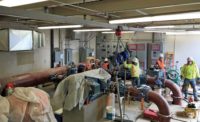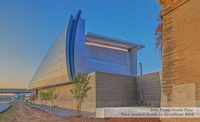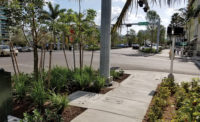Morse Lake Pump Plant Project
North Bend, Wash.
Best Project
Owner: Seattle Public Utilities
Lead Designer: AECOM
General Contractor: Orion Marine Contractors Inc.
Structural Engineer: Reid Middleton Inc.
MEP Engineer: Valley Electric Co.
Specialty Equipment: Whitney Equipment Co.
Chester Morse Lake in the Cascade Mountains is the major reservoir for Seattle’s water system, providing the region with more than two-thirds of its drinking water. Seattle Public Utilities’ $28.4-million pump plant replaced two 35-year-old pump stations on barges with a single floating station capable of pumping 240 million gallons of water a day.
During dry conditions, Morse Lake’s elevation drops below its discharge dike that hydraulically separates the upper lake from the lower pool and downstream outlet to the Cedar River. When this occurs, the utility must pump lake water into the outlet channel to supply water to its 1.4 million customers.
The Morse Lake Pump Plant consists of steel pontoons supporting four submerged pumps with intake screens. When needed, the pump plant is ferried into position and connected to four submerged thermoplastic pipelines so water can be pumped through the dike and into the channel and river. In addition to designing and building the pump plant, the team improved access roads and installed underwater piles and electrical cables.
The project’s mountain setting presented challenges, including high winds, freezing rain and heavy ice accumulation on the pump plant. Protecting water quality required a strict screening process for entry into the 90,000-acre Cedar River watershed.
Every truck and piece of equipment was inspected for leaks before use, and all marine-based equipment underwent decontamination before entering the lake. The crew also used drop hammers to install pilings to prevent possible contamination from diesel hammer overspray.
The plant’s “space station” docking mechanism allows the pumps to attach to pipelines without any mechanical connections. This approach allows utility workers to quickly mobilize the platform and pump when needed or disengage the platform in case of a severe storm.
To develop this docking station approach, the team designed and ballasted the submerged pipelines to be neutrally buoyant and align with the platform over a range of water elevations and environmental conditions. Four below-platform guide cones allow docking to occur without divers.
Related Article: Top Projects Reflect Innovation, Creativity






Post a comment to this article
Report Abusive Comment